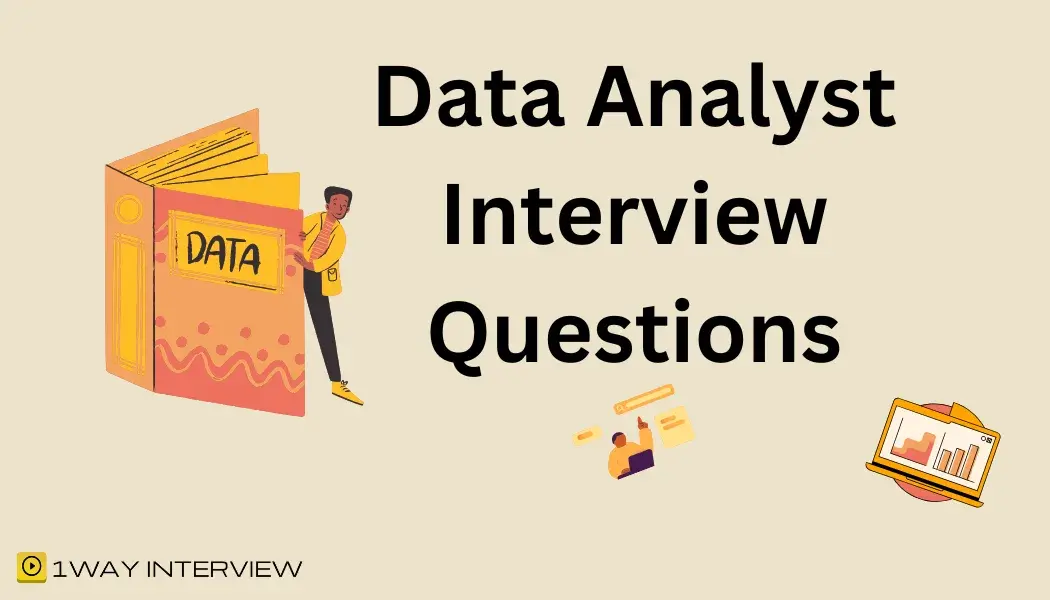Data analysts became mandatory for organizations that conduct operations based on dataset evaluations. A fundamental duty for these professionals is collecting data to understand its meaning for making insights that advance business growth. Through comprehensive job interviews, companies can discover candidates who demonstrate success in both data analysis tasks and complex information simplification.

Key Qualities of Data Analyst Employers Look For
- Technical knowledge: Essential skills involve SQL programming language along with Python knowledge, expertise in Excel, and visualization tool capabilities.
- Analytical Mindset: The skill of extracting meaningful insights from large datasets.
- Detail-oriented type: As part of data analysis, both accuracy and full completion have to be guaranteed.
- Communication Skills: The presentation of research findings needs to be simple for different organizational groups.
- Adaptability: When facing data challenges, the ability to use creativity and efficiency ranks highly.
Best Practices for Interviewing Data Analyst
- Prepare Behavioral Questions: Use realistic workplace situations to conduct tests that evaluate the problem-solving competencies of prospective employees.
- Check Soft Skills: The assessment of soft competencies needs to verify technical presentation skills across multiple stakeholder types.
- Leverage Technical Proficiency: Candidates need to demonstrate their analytics tool proficiency along with data manipulation skills in technical assessment tests.
- Evaluate skills and experience in AI: Combine your operations with AI-Assisted Platforms through the use of 1Way Interview for conducting seamless and methodical interview sessions.
- Check Cultural Fit: Review how your business philosophy and office dynamics match the organizational core values.
Interview Questions for Data Analyst
| Question | Criteria for Correct Answer | Criteria for Acceptable Answer |
|---|---|---|
| Please describe a project that involved complex data analysis. | Must detail a specific project with clear data sources, methodologies (e.g., regression, clustering), and measurable outcomes (e.g., increased efficiency by X%, revenue impact in dollars). | Provides a general project overview with some details but lacks specific metrics or quantifiable results. |
| What procedures do you use to keep your analysis data accurate? | Lists systematic steps such as data cleaning, validation checks (e.g., error rate <1%), regular audits, and mentions specific tools or scripts (e.g., SQL, Python libraries). | Lists one or two common tools with general reasoning (e.g., ease of use) without detailed comparisons. |
| From a range of data visualization tools, which ones do you choose as a preference? | Names at least two tools (e.g., Tableau, PowerBI) with reasons based on integration, scalability, and cost-effectiveness. | Lists one or two common tools with general reasoning (e.g., ease of use) without detailed comparisons. |
| What procedures do you use to manage big datasets containing inconsistent information? | Describes using ETL processes, normalization, error detection, and tools (e.g., Hadoop, Spark) with quantitative benchmarks for data consistency. | Outlines general cleaning and standardization methods without specifying processes, tools, or measurable outcomes. |
| What are the steps you take when multiple data needs compete against each other? | Outlines a prioritization framework based on business impact (e.g., ROI, customer metrics), stakeholder input, and quantitative analysis (cost-benefit, impact estimates). | Describes prioritization based on business needs or stakeholder feedback without a structured or measurable approach. |
| What specific business metrics do you choose for analyzing data? | Identifies at least three key metrics (e.g., conversion rate, customer acquisition cost, churn rate, ROI) and explains their relevance with target benchmarks. | Lists common metrics with minimal context or without linking them to specific business outcomes. |
| What predictive model have you constructed in the past? | Specifies the model type (e.g., logistic regression, time series forecasting, machine learning algorithm), dataset size, performance metrics (accuracy, RMSE), and its business impact. | Describes a predictive model in general terms without detailing performance metrics or quantitative business benefits. |
| What methods should be used to depict intricate datasets for people who lack technical knowledge? | Recommends simplified dashboards, annotated charts, or infographics, emphasizing clarity and including examples of quantitative summaries. | Suggests using basic charts or visual aids without discussing design principles or techniques to simplify complexity. |
A candidate who brings expertise in technology alongside problem-solving aptitude and effective communication capacity should be selected. A reliable hiring solution such as 1Way Interview tool enables you to conduct professional and smart recruiting campaigns.